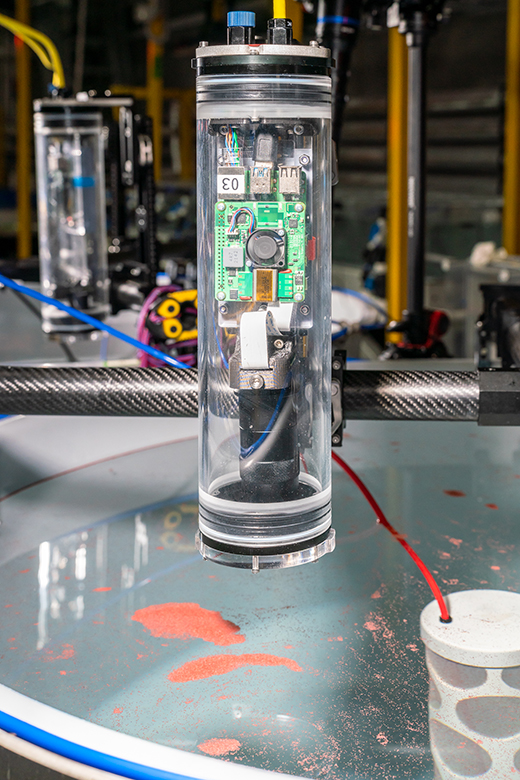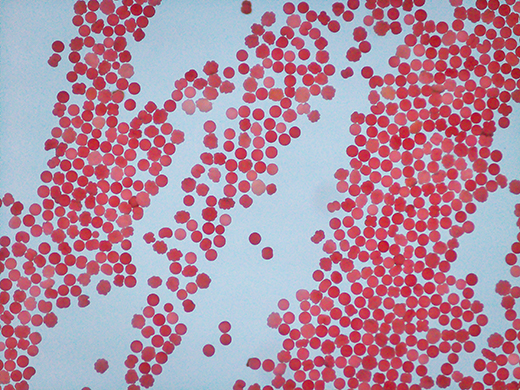QUT researchers are developing world-first techniques to help breed a million baby corals every year to help repopulate the Great Barrier Reef after bleaching events caused by climate change.
The researchers aim to release up to one million year-old young, resilient corals onto the Great Barrier Reef every year by 2025, but are limited by the intensive work required to monitor and count the baby corals as they grow in the facility.
A QUT team has developed two systems that use state-of-the-art computer vision and artificial intelligence (AI) techniques to automate the labour-intensive counting and monitoring processes.
QUT technical lead and robotics research fellow Dr Dorian Tsai tested the first system prototypes in last month's coral spawning event in north Queensland, and was thrilled with the results.
"We compared our automatic spawn counts with the manual counts and were within three percent, which is a fantastic outcome for a first trial," he said.

trailled to automate coral spawn counting.
Dr Tsai is excited about their potential to restore reefs damaged by rising sea temperatures.
"These technologies will provide coral researchers around the world with unprecedented levels of control in mass producing corals," he said.
Translation to Deployment Subprogram Project co-lead Karen Jackel says, if successful, the systems will reduce the cost of mass-producing coral and will allow sampling and monitoring to be done faster and more frequently, which will improve the process of resettling baby coral on the reef.
"We know that coral bleaching events will continue to occur, so we are trying to grow coral that will adapt and be more resilient to climate change. At the moment, counting the coral spawn and monitoring baby coral growth creates bottlenecks in the overall process because they're done manually," she said.
"Counting one tank of coral spawn requires two full-time coral caretakers working 24/7 for a full week. Even if people doubled up counting tanks, you'd still need 70 experts for a week to count the number of spawn we want, which would be too expensive to staff," she said.
Miss Jackel said the aim was to automate and scale up the process so a future reef restoration industry could act quickly to repopulate reef sections that were in trouble.
"We need to create a scalable and reliable product that can be used by trained experts rather than scientists if we're going to be able to restore the larger areas of the Great Barrier Reef," she said.
The QUT team is trialling the first prototypes of their Coral Spawn and Larvae Imaging Camera System (CSLICS) and the Coral GRowout Assessment System (CGRAS) in the National Sea Simulator at the Australian Institute of Marine Science near Townsville this month.
Dr Tsai said AIMS researchers had told him that in the first 24 hours the coral larvae are too delicate to touch, so researchers have never been able to count coral spawn until after the first day.
"One of the most significant advantages of the CSLICS system is that because it uses cameras, which don't require contact, we will now be able to count the spawn during this time," Dr Tsai said.

CSLICS uses state-of-the-art vision techniques to capture and automate the counting of spawn, while CGRAS is a camera prototype system that uses state-of-the-art deep learning algorithms to detect and then count individual coral babies, monitor their growth, track the impact of changes in growing conditions and visualise correlations between growth and conditions in real time.
QUT research engineer Riki Lamont says they worked hard to ensure the parts were available commercially so the camera systems could be prototyped rapidly, and at minimal cost.
"A large part of what makes the CSLICS system innovative is the low-cost and modular approach used to develop the camera systems, combined with the state-of-the-art artificial intelligence to perform the detection and monitoring algorithms," he said.
This work was undertaken for the Reef Restoration and Adaptation Program (RRAP), a collaboration of leading experts, to create a suite of innovative measures to help preserve and restore the Great Barrier Reef. Funded by the Australian Government, partners include the Australian Institute of Marine Science, CSIRO, the Great Barrier Reef Foundation, The University of Queensland, Queensland University of Technology and James Cook University.






